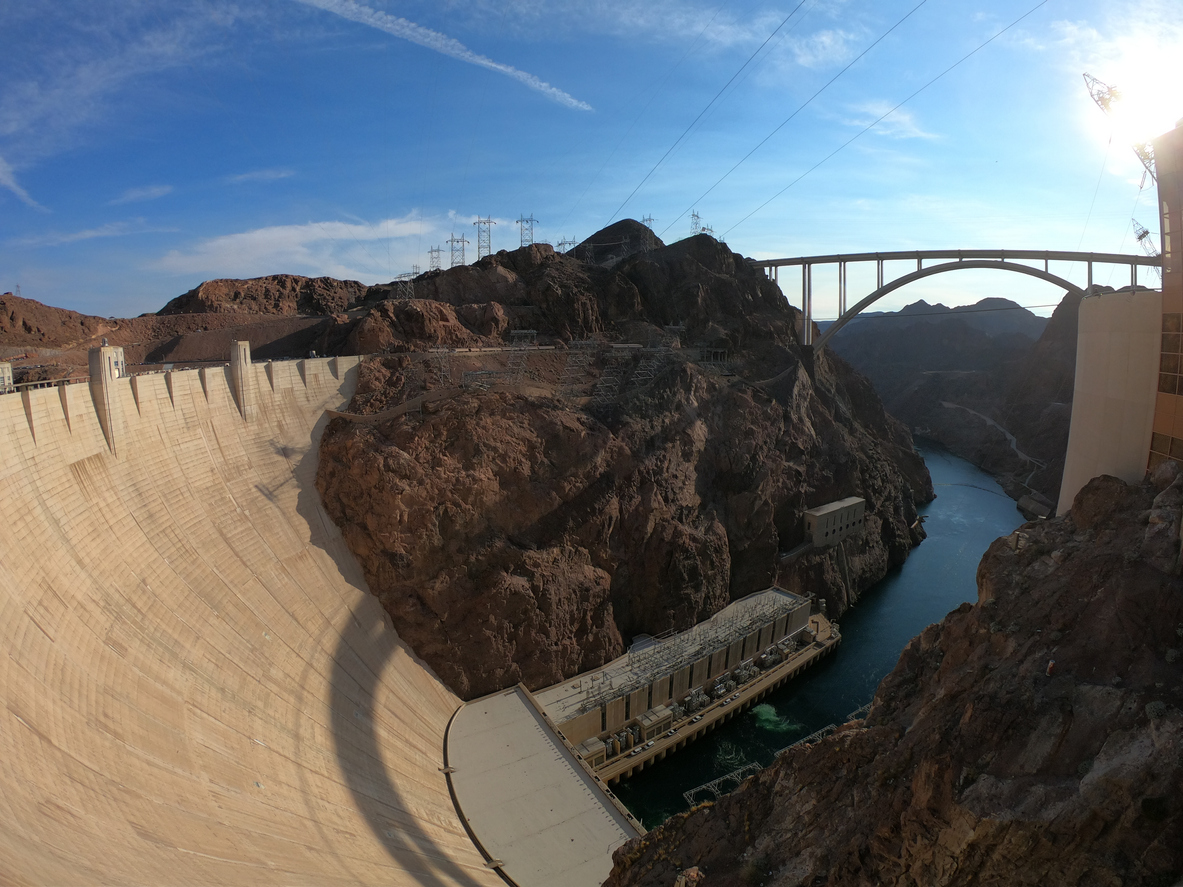The water level at Lake Mead, the Colorado River reservoir serving the Hoover Dam, fell to 1,068 ft. in July, the lowest level since the lake was first filled following the dam’s construction in the 1930s. This month, the federal government is expected to declare a water shortage on the Colorado River for the first time, triggering cutbacks in water allocations to surrounding states from the river.
Widespread drought conditions throughout the Southwest over the past 20 years have led to a more than 130-foot drop in the water level at Lake Mead since 2000.
The Bureau of Reclamation’s latest projections, from July, show the lake’s water level falling another 31 ft., to 1,037 ft., by June 2023.
For dams to produce power, they rely on the immense pressure created by the body of water they are blocking. As water levels go down, less pressure is exerted and the dams in turn produce less hydroelectric energy, which means the dam can produce less power.
While 1,068 ft. of depth in a body of water as large as Lake Mead seems massive, every foot of water lost equates to about six megawatts less power generated in a year, according to Patti Aaron, public affairs officer at the U.S. Bureau of Reclamation, which operates and maintains the power plant. Six megawatts roughly translates to the power consumed by 800 homes.
If the water level drops 118 ft. from July’s level, to 950 ft., it would fall below the turbines and the dam must shut down, Ms. Aaron said.
The power declines are significant. At 1,200 ft. water elevation—where it was in the year 2000, when water levels were among the dam’s highest levels—the dam can power up to 450,000 homes. At the current elevation, that figure falls to 350,000.
The Hoover Dam is one of the nation’s largest hydroelectric facilities. About 23% of its power output serves Nevada, 19% serves Arizona, and most of the remainder serves Southern California.
The California Independent System Operator, or Caiso, which oversees the state’s power grid, last summer resorted to rolling blackouts during a West-wide heat wave that constrained the state’s ability to import electricity. The supply crunch was most acute in the evening, after solar production declined.













